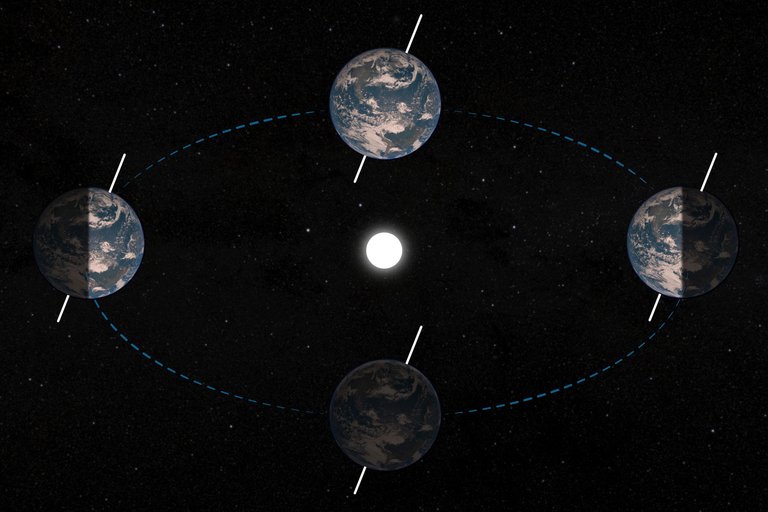Winter Solstice
What is the Winter Solstice:

Image Credits: brittanica.com
Winter Solstice is an astronomical phenomenon that marks the beginning of winter. On that day, one of the hemispheres (northern or southern) receives the sun's rays obliquely (inclined). This causes that hemisphere to receive less sunlight and therefore less heat.
In the Southern Hemisphere, where Brazil is located, the winter solstice always occurs on the 20th or 21st of June. In the Northern Hemisphere, where the United States and Europe are, the winter solstice occurs between December 20 and 21. Hemispheres are the two halves of the globe, which is divided in half by the equator.

Image Credits: wikipedia.com
Winter Solstice
The winter solstice is the shortest day of the year and, consequently, the longest night in terms of solar illumination. While the winter solstice occurs in one hemisphere, the summer solstice occurs in the other, the moment of maximum incidence of solar radiation. Thus, when it is winter in Brazil (Southern Hemisphere), it is summer in Portugal (Northern Hemisphere), and vice versa.
The solstice happens thanks to the combination of two factors: the Earth's translation (the path the planet takes around the Sun) and the inclination of the Earth's axis of rotation in relation to its orbital plane. Thanks to this, sunlight is unevenly distributed between the two hemispheres of planet Earth, and the solstice is the point at which this inequality reaches its limit.

Image Credits: weatherzone.com
Winter Solstice in the Southern Hemisphere
The winter solstice in the Southern Hemisphere, where Brazil is located, occurs between the 20th and 21st of June.
On that day, the solar incidence in the Southern Hemisphere is low, since, due to the tilt of the Earth, it is the Northern Hemisphere that faces the Sun. Thus, we will have in Brazil the longest night and the shortest day of the year. We will receive less solar radiation, so the tendency is for temperatures to be lower.

Image Credits: weather.com
When are the next winter solstices in the Southern Hemisphere?
Year Day Time
2022 June 21 6:14 am
2023 June 21 11:58 am
2024 June 20 5:51 pm
2025 June 20 11:42 pm

Image Credits: brittanica.com
Summer Solstice
The summer solstice marks the beginning of this season. During the summer solstice, one of the Earth's hemispheres is at its maximum point of inclination towards the Sun. This makes it receive more sunlight and more heat. The summer solstice has the longest day and the shortest night of the year.
At the Southern Hemisphere's summer solstice, the Tropic of Capricorn receives the sun's rays perpendicularly. Already when it is summer solstice in the Northern Hemisphere, it is the Tropic of Cancer that receives solar radiation directly.

Image Credits: wikipedia.com
Equinox
The equinox is also an astronomical phenomenon that marks the beginning of two seasons of the year, in this case autumn and spring. As with the solstices, the equinoxes occur at opposite times in the Southern Hemisphere and the Northern Hemisphere.
In the Southern Hemisphere, the autumnal equinox usually occurs between the 20th and 21st of March, and the spring equinox occurs on the 22nd or 23rd of September.
Source of potential plagiarism
Direct translation without giving credit to the original author is Plagiarism. Repeated plagiarism is considered fraud. Fraud is discouraged by the community and may result in the account being Blacklisted.
Guide: Why and How People Abuse and Plagiarise
Please note that direct translations including attribution or source with no original content are considered spam.
If you believe this comment is in error, please contact us in #appeals in Discord.